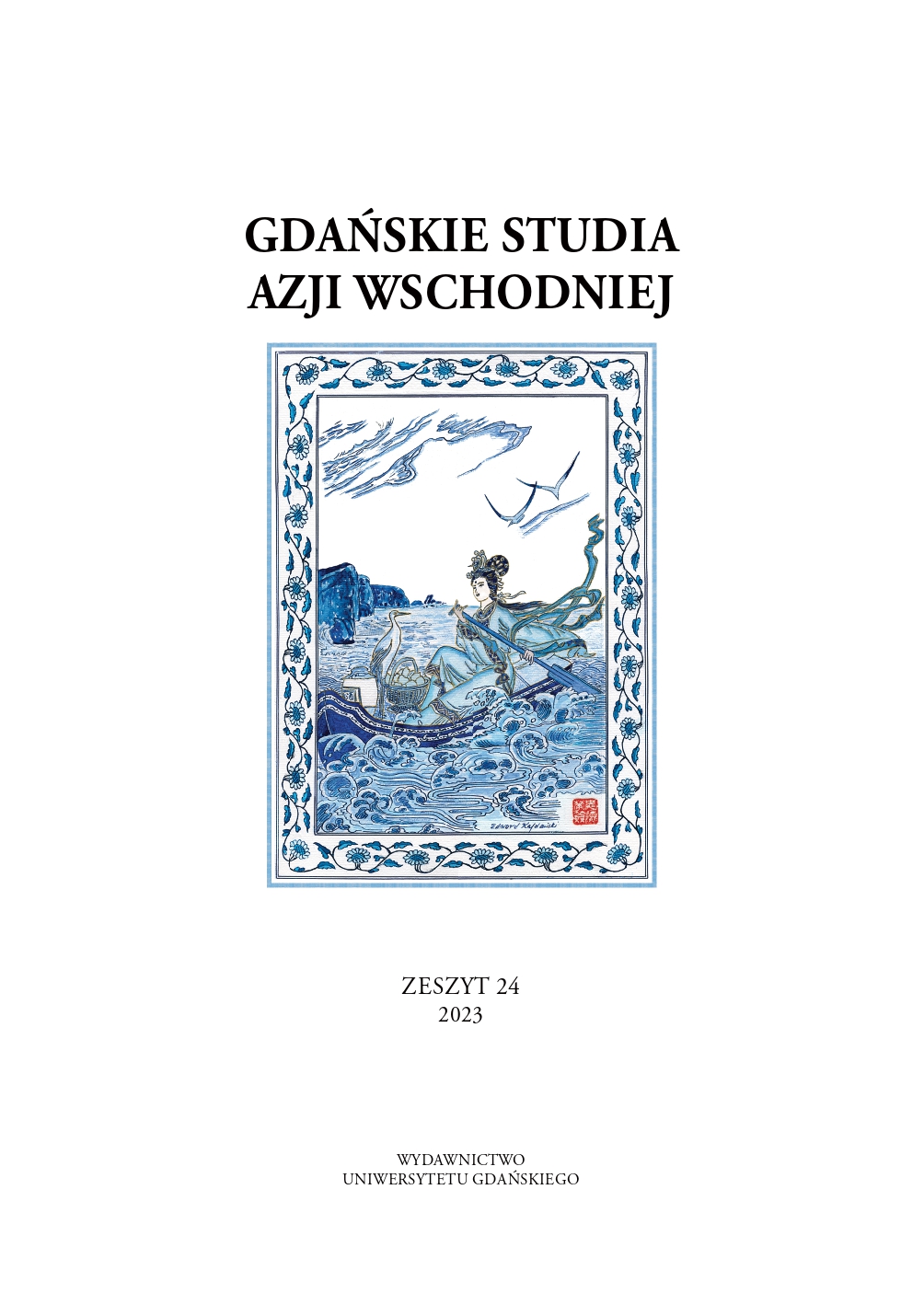Transkulturowe znaczenie ksiąg ubioru na przykładzie hiszpańskiego Boxer Codex w nowożytnej Europie
Abstrakt
The Boxer Codex is a Spanish manuscript dated approximately to 1590. It was written in the Philippines in Manila, having been commissioned by the contemporary governor of Manila, Gomez Pérez Desmariñas. The document is called after the name of the last private owner of the codex, Charles R. Boxer, a historian and specialist on the history of colonialism in Asia. It contains illustrations showing figures in costumes representing peoples living in areas colonized by the Spaniards in Asia (The Philippines) and neighbouring lands, such as China, Japan, the Spice Islands (the Moluccas), Brunei, Java, Siam (Thailand), Northern and Central Vietnam, and others. Alongside the illustrations are texts describing the geography and customs of the minorities who live there; these, research shows, may be copies from the work of Martin de Rada, Miguel Rojo de Brito, and other anonymous authors.
This article examines the manuscript from the perspective of costume studies. Because of the very extensive material in the manuscript, the author has selected several illustrations connected with Chinese dress in order to show its richness and the first European view of Chinese culture on the threshold of modern times. The author juxtaposes these with the already well-known accounts of the Polish sinologist Michał Boym (1612-1659). Boym’s accounts of Chinese dress (and not just of that) form a supplement to the illustrations from The Boxer Codex. This manuscript is also one of the first documents relating to the so-called volumes of costumes, which were put together both in Europe and in the Far East, and which made it possible to learn about still undiscovered countries and their inhabitants.
Downloads
Bibliografia
Alden D., Charles R. Boxer: An uncommon life: soldier, historian, teacher, collector, traveler, Fundação Oriente, Lisboa 2001.
Boxer Codex (Sino- Spanish Codex), 1590–1593, Lilly Library, Bloomington, USA: https://webapp1.dlib.indiana.edu/metsnav3/general/index.html#mets=h#ps://purl.dlib.indiana.edu/ iudl/1general/mets/VAB8326&page=1.
Boxer C.R., A late sixteenth century Manila MS, „Journal of the Royal Asiatic Society, of Great Britain and Ireland” 1950, vol. 82.
Bond K., Costume Imagery and the Visualisation of Humanity in Early Modern Europe [w:] Writing Visual Histories, eds. L. Jordanova, F. Grant, Bloomsbury Academic, London 2020.
Chan Zhang, Jianbin Huang, Tiequan Zhu, Rongling Zhang, Guangzhou Tongcao painting in late China Qing Dynasty (1840–1912 AD); technology revealed by analytical approaches, „Heritage Science” 2021, no. 9.
Coo S.M.R., Clothing and the colonial culture of appearances in nineteenth century Spanish Philippines (1820– 1896), Université Nice Sophia Antipolis 2015 [rozprawa doktorska].
Crossley J.N., Juan Cobo, El Codice Boxer y los sangleyes de Manila [w:] El Códice Boxer Etnografía colonial e hibridismo cultural en las islas Filipinas, eds. M. Ollé, J.-P. Rubiés, Universidad de Barcelona, Barcelona 2019.
Crossley J.N., The Early History of the Boxer Codex, „The Royal Asiatic Society” 2014, vol. 24, issue 1.
Gao Chunming, Chinese Dress and Adorment through the Ages. The Art of Classic Fashion, Cypi Press, London 2010.
Gonzales G., The Philippine Dress: 500 Years of Straddling Polarities, „Arts of Asia”, Autumn 2022.
He Jianguo, Zhang Yanying, Hair Fashions of Tang Dynasty Women, Hair and Beauty Co., Ltd, Hong Kong 1987.
Hostetler L., Wu Xuemei, Qing Imperial Illustrations of Tributary Peoples (Huang Qing zhigong tu). A Cultural Cartography of Empire, Brill, Leiden 2022.
Hsieh E., The Power of Images in the Boxer Codex and Cultural Convergence in Early Spanish Manila [w:] Historical Archaeology of Early Modern Colonialism in Asia Pacific, eds. M. Cruz Berrocal, Chenghwa Tsang, University Press of Florida, Florida 2016.
Justiniani McReynolds P., The Embroidery of Luzon and the Visayas, „Arts of Asia” 1980, vol. 10.
Kajdańska A., Ubiory w nowożytnym Gdańsku od połowy XVI do końca XVIII wieku, Wydawnictwo Uniwersytetu Gdańskiego, Gdańsk 2020.
Kajdański E., Chiny. Leksykon, Książka i Wiedza, Warszawa 2005.
Kajdański E., Michał Boym. Ambasador Państwa Środka, Książka i Wiedza, Warszawa 1999.
Kajdański E., Michała Boyma opisanie świata, Oficyna Wydawnicza Volumen, Warszawa 2009.
Li Niu, Linlin Shen, Analysis of Modelling, Techniques and Functions of the Chinese Skullcap, „Fibres and Textiles in Eastern Europe” 2021, vol. 29, no. 5(149).
Liu Junwen, Beijing. China’s Ancient and Modern Capital, Foreign Langugaes Press, Bejing 1982.
Losty J.P., Identyfiing The Artist of the Codex Casanatese, 1889, „Anais de Historia de Alem-Mar” 2012, vol. 13.
Martínez L.A.B., El Códice Boxer. Edición moderna de un manuscrito del siglo XVI, Palabra de Clío, A.C., Mexico 2019.
Martini M., Wachlarze Wschodu [w:] Wachlarze Zachodu i Wschodu, red. B. Biedrońska-Słotowa, Muzeum Narodowe w Krakowie, Kraków 2001.
Moseley-Christian M., Confluence of Costume, Cartography and Early Modern European Chorography, „Journal of Art Historiography” 2013, no. 9.
Newitt M.D.D., Charles Ralph Boxer (1904–2000), „Proceedings of the British Academy” 2002, vol. 115.
Ollé M., Rubiés J.P. (eds.), El Códice Boxer Etnografía colonial e hibridismo cultural en las islas Filipinas, Universidad de Barcelona, Barcelona 2019.
Puerta Escribano de la R., Los tratados del Arte del vestido en la España Moderna, „Archivo Español de Arte” 2001, no. 74 (293).
Riello G., The World in a Book: The Creation of the Global in Sixteenth- century European Costume Books, „Past and Present” 2019, vol. 242, Supplement 14.
Romero L., The Likely Origins of The Boxer Codex: Martín de Rada and the Zhigong Tu, „Humanista” 2018, vol. 39.
Shuhua Zhang, Musdi bin Hj. Shanat, Lee Abdullah Q.D., The Expression of Religious Elements and Factors of Religious Thoughts in the Empress’s Ceremonial Costume „Hui Yi” of Song Dynasty, „International Journal of Service Management and Sustainability” 2021, vol. 6, no. 1.
Souza G.B., Turley J.S., The „Boxer Codex”: Transcription and Translation of an Illustrated Late SixteenthCentury Spanish Manuscript concerning the Geography, History and Ethnography of the Pacific, South-East and East Asia, Brill, Leiden 2016.
Szafar T., W cieniu świątyń Angkoru, Nasza Księgarnia, Warszawa 1971.
Wang Cheng-hua, Lifestyles, Knowleadge, and Cultural products: Fujian Daily-Use Encyclopedias of the late-Ming Dynasty and their Painting and Calligraphy Sections, „Journal of the Institute of Modern History, Academia Sinica” 2003, vol. 41.
Wang Hanyi, The China Images in Manila: Research of China Images’ Illustrations on the Late Sixteenth Century Boxer Codex, „Advances in Social Science, Education and Humanities Research” 2021, vol. 594.
Weiditz C., Trachtenbuch, 1530–40. Hs. 22474, Germanisches Nationalmuseum, Nuremberg.
Woohyun Cho, Jaeyoon Yi, Jinyoung Kim, The dress of the Mongol Empire: Genealogy and Diaspora of the Terlig, „Acta Orientalia Academie Scientarum Hungaricae” 2015, vol. 68.
Xinyi Wang, Colbert F., Legoux R., From Niche Interest to Fashion Trend: Hanfu Clothing as a Rising Industry in China, „International Journal of Arts Mangement” 2020, vol. 23.
Yuxian Song, The Power of the Phoenix Crown, Imperial Women and Material Culture in Late Ming China, University of Alberta, Alberta 2015.

 Uniwersyteckie Czasopisma Naukowe
Uniwersyteckie Czasopisma Naukowe





